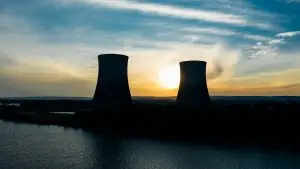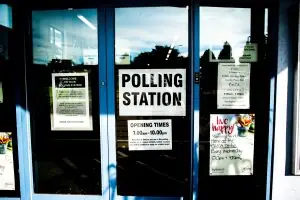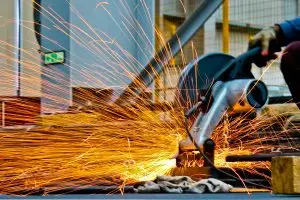With clean power targets looming and energy demand rising, what role might nuclear energy play in achieving the UK Government’s ambitions?
The UK Government is expected to announce its Final Investment Decision (FID) for Sizewell C, as well as funding for Small Modular Reactors (SMRs), before the June spending review.[1] However, despite bold pledges, both current and previous Government action on nuclear has faced delays, as highlighted in our article back in January.[2] With the Future of Energy Security Summit taking place last week, discussions around energy security and the UK’s future energy mix have featured heavily in the news.[3] In this article, Brevia Energy reviews the latest considerations the Government faces in delivering its nuclear ambition, and how this fits into the Net Zero transition.
Targets and Progress
The UK Government aims to generate 24 GW of nuclear capacity by 2050 – nearly a quarter of the country’s projected electricity demand.[4] With this figure currently only at 6.5GW (approximately 15 per cent of electricity), there is still significant progress to be made. The decommissioning of seven out of eight Advanced Gas-cooled reactors by 2028 will do little to help the process.[5] This means the Government must both replace existing capacity and expand it to meet future targets.
Currently, Hinkley Point C is the only large-scale nuclear project under construction and is expected to commence operation by 2029 at the earliest, following numerous delays.[6] Whilst plans are underway for the development of Sizewell C, the FID by Government has yet to be made. Alongside large-scale nuclear power plants, the Government is also exploring the potential role SMRs can play, with the Government having committed to deploying at least one new SMR from 2030 and currently hosting a competition for developers to submit their SMR designs.[7]
Starmer ‘Saying No’ to the Nimbys
Earlier in February this year, Prime Minister Keir Starmer pledged to address ‘the blockers who have strangled our chances of cheaper energy, growth and jobs for far too long’.[8] Existing legislation limits nuclear development to eight sites across the UK. Investors also contend with various hurdles in planning: in 2011, EDF submitted a 30,000-page environmental assessment to obtain planning permission for Hinkley Point C.[9]
The Government’s National Policy Statement for Nuclear Energy Generation (EN-7) aims to cut through this ‘red tape’. Proposed reforms include longer planning timelines, more flexible site selection, and a streamlined planning process.8 These changes are designed to attract investment and encourage developers to bring forward sites. The feedback from the second round of consultation for the EN-7 is currently being analysed by the Government and is expected to be completed this spring.[10] However, planning is not the only factor that needs to be addressed in order to make headway in the nuclear industry.
The Cost of Cutting Carbon
Hesitancy towards nuclear energy goes beyond nimbyism. While both renewable and nuclear developments are subject to local opposition, there are considerable cost concerns levied against nuclear power. The Climate Change Committee’s (CCC) Seventh Carbon Budget (7CB), published in February, placed little emphasis on the role of nuclear, citing cost and time considerations.[11] examining the 7CB.[12] However, the Government’s interest in SMRs, which are expected to be quicker and cheaper to construct than large-scale nuclear reactors, indicates that nuclear power may have a more scalable future than anticipated.[13]
Dispatchable Power is Indispensable
The Government’s approach to nuclear power is also likely to be shaped by the challenges facing long-established, energy-intensive industries such as steel and ceramics, who have voiced concerns about being left behind in the UK’s race to Net Zero due to high energy costs.[14]
The issue of high energy costs making British manufacturing less competitive for investment has featured heavily in recent debates, including at the recent Business and Trade Oral Evidence Session on the Government’s new Industrial Strategy, where Nissan reported that their Sunderland plant has the highest energy costs of any of its sites worldwide.[15] This challenge is compounded by mounting pressure from trade unions and local communities to safeguard employment in these sectors, in turn strengthening the case for including reliable, firm power sources, such as nuclear, alongside renewables.[16]
Alongside this, the Government has signalled an expanding role for nuclear in emerging energy-intensive sectors, such as data centres (previously discussed by Brevia Energy in our recent article).[17] Representatives from the nuclear sector have also been included in the newly established AI Energy Council, underscoring the potential role the Government sees for nuclear in powering future digital infrastructure.[18]
Looking Ahead
The coming months represent an important juncture in Government policymaking, encompassing the long-awaited FID on Sizewell C and the Review of Electricity Market Arrangements, to progress on the Planning and Infrastructure Bill and a new Industrial Strategy. These developments will clarify how the Government plans to meet its Net Zero commitments, and where nuclear fits. While still perceived as costly and politically contentious, nuclear power remains one of the few low-carbon sources capable of providing dispatchable power at scale. As ministers balance clean-power targets with the needs of energy-intensive industries, nuclear stakeholders have an opportunity to demonstrate the contribution their technologies can make towards the UK’s Net Zero ambitions.
Brevia Energy is a dedicated division of Brevia Consulting, and has a longstanding reputation for its expertise and experience in the Energy Sector.
To organise a discussion with Brevia Energy on how we can help you and your organisation, please get in touch via the link here. You can also contact the Brevia Energy Team on 020 7091 1650 or email contact@brevia.co.uk
Notes
[1]The Times, ‘Keir Starmer goes nuclear in his drive for growth’, 09 April 2025, Link.
[2]Brevia Consulting, ‘Energy Policy Progress: Where are we with Nuclear?’, 08 January 2025, Link.
[3]UK Government, ‘Future of Energy Security summit: Energy Secretary opening remarks’, 24 April 2025, Link.
[4]Department for Energy Security & Net Zero, ‘Civil nuclear: roadmap to 2050’, 26 January 2024, Link.
[5]National Audit Office, ‘The decommissioning of the AGR nuclear power stations’, 28 January 2022, Link.
[6]World Nuclear Association, ‘Nuclear Power in the United Kingdom’, 06 December 2024, Link.
[7]UK Government, ‘Advanced Nuclear Technologies’, 06 December 2024, Link.
[8]UK Government, ‘Government rips up rules to fire-up nuclear power’, 06 February 2025, Link.
[9]BBC News, ‘EDF Energy’s Hinkley Point plans released to public’, 24 November 2011, Link.
[10]Department for Energy Security and Net Zero, ‘Draft National Policy Statement for nuclear energy generation (EN-7)’, 06 February 2025, Link
[11]Climate Change Committee, ‘The Seventh Carbon Budget’, 26 February 2025, Link.
[12]Environmental Audit Committee, ‘Proposals for the Seventh Carbon Budget’, 07 April 2025, Link.
[13]Nuclear Industry Association, ‘NIA REACTION TO CCC SEVENTH CARBON BUDGET’, 26 February 2025, Link.
[14]Department for Business & Trade, ‘Government acts to save British steel production’, 12 April 2025, Link.
[15]Business and Trade Committee, ‘Industrial Strategy’, 23 April 2025, Link.
[16]BBC News, ‘Pottery workers told to pack up and leave – union’, 06 February 2025, Link.
[17]Brevia Consulting, ‘Government AI Action Plan & AI Growth Zones: Where does energy tie into this?’, 14 January 2025, Link.
[18] UK Government, ‘AI Energy Council to ensure UK’s energy infrastructure ready for AI revolution’, 08 April 2025, Link.




